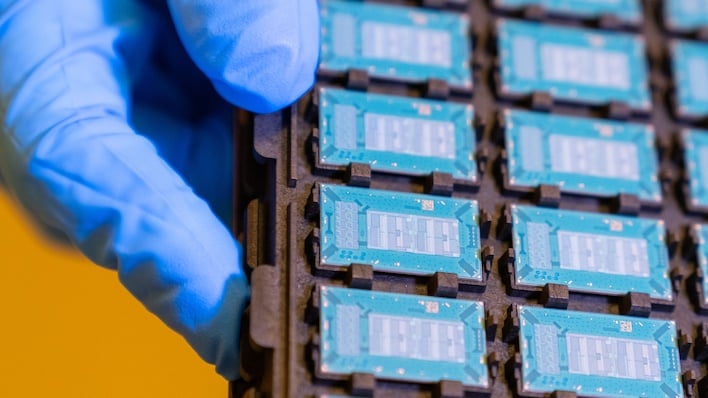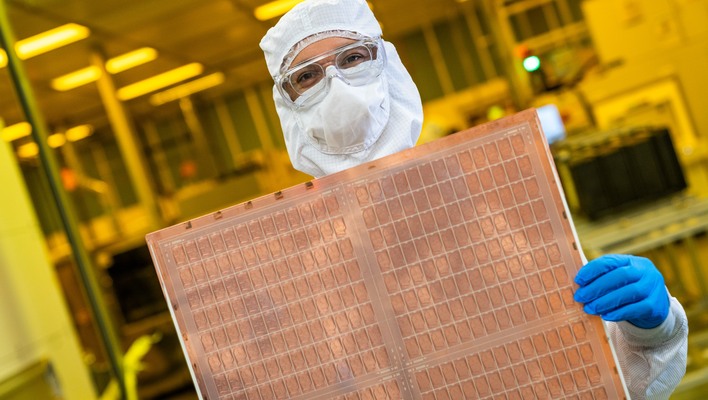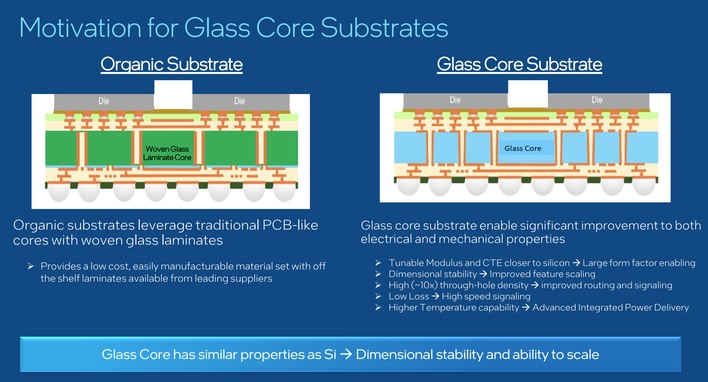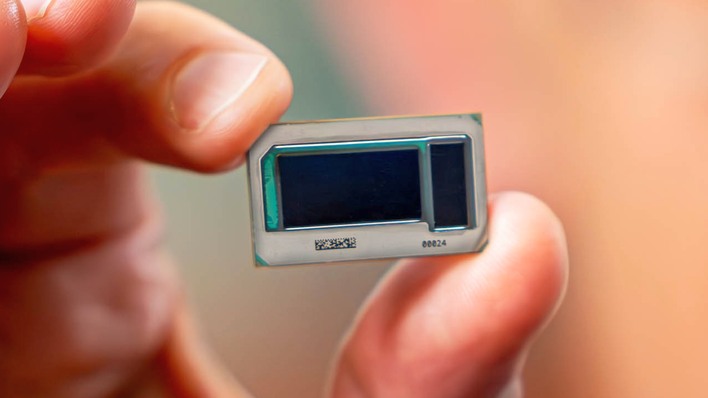Intel To Use Glass Substrates To Enable 10x Interconnect Density For Multi-Die Processors
No matter what, it's clear at this point that the way forward for the semiconductor industry is chiplets, or "tiles" in Intel nomenclature. Piling multiple pieces of a processor onto one package brings a lot of challenges, though. One of those is the assembly of the chiplet package itself. Typically, manufacturers use organic substrates as they have for more than twenty years. However, Intel says the next step is glass.
Perhaps most importantly, Intel says that they support ten times the interconnect density. You may recall that interconnect density was also an important subject of research for AMD and its "Infinity Fanout" used in its RDNA 3 GPUs. It sounds like a glass substrate could neatly sidestep a lot of the issues that the house of Radeon faced when putting together those parts.
Thanks to this development, Intel's chip architectures will be able to use more chiplets in a smaller footprint on a single package, and it also will allow drastically-improved performance for the interconnects between the chiplets and also whatever the package is connected to, like PCIe 6.0 or 7.0 and future CXL versions. In essence, this technology allows scaling to continue.
Don't get too excited yet, though. Intel hasn't actually announced any products with glass substrates, yet, and it won't for some time. The company says that the new method will find its way to products with advanced packaging "later this decade." It's only 2023, so it could be as long as seven years before this technology actually makes its way to market.
The company just released materials today announcing its achievement of "electrically-functional" glass-core substrate designs after a decade of research on the topic. The company says that it has a "fully integrated glass R&D line with over $1B investment," and that preparing for the transition has required close work with equipment and materials partners. Apparently, it has taken "over 600 inventions" to get to this point.
If it was such a difficult achievement, what does Intel have to show for it? Well, glass substrates are apparently better than organic substrates in lots of ways. They tolerate higher temperatures better, and they also offer improved dimensional stability. That means they're able to achieve extremely tight tolerances that organic substrates couldn't.
Perhaps most importantly, Intel says that they support ten times the interconnect density. You may recall that interconnect density was also an important subject of research for AMD and its "Infinity Fanout" used in its RDNA 3 GPUs. It sounds like a glass substrate could neatly sidestep a lot of the issues that the house of Radeon faced when putting together those parts.
Intel also notes that the improved mechanical properties of glass enable "ultra-large form-factor packages with very high assembly yields." One of the big benefits of chiplet design is that you can create larger processors than would be practical with monolithic fabrication, but this was offset by the additional complexity of assembling giant processor packages. With Intel's new advance, that concern may be a thing of the past.
Thanks to this development, Intel's chip architectures will be able to use more chiplets in a smaller footprint on a single package, and it also will allow drastically-improved performance for the interconnects between the chiplets and also whatever the package is connected to, like PCIe 6.0 or 7.0 and future CXL versions. In essence, this technology allows scaling to continue.
Don't get too excited yet, though. Intel hasn't actually announced any products with glass substrates, yet, and it won't for some time. The company says that the new method will find its way to products with advanced packaging "later this decade." It's only 2023, so it could be as long as seven years before this technology actually makes its way to market.





